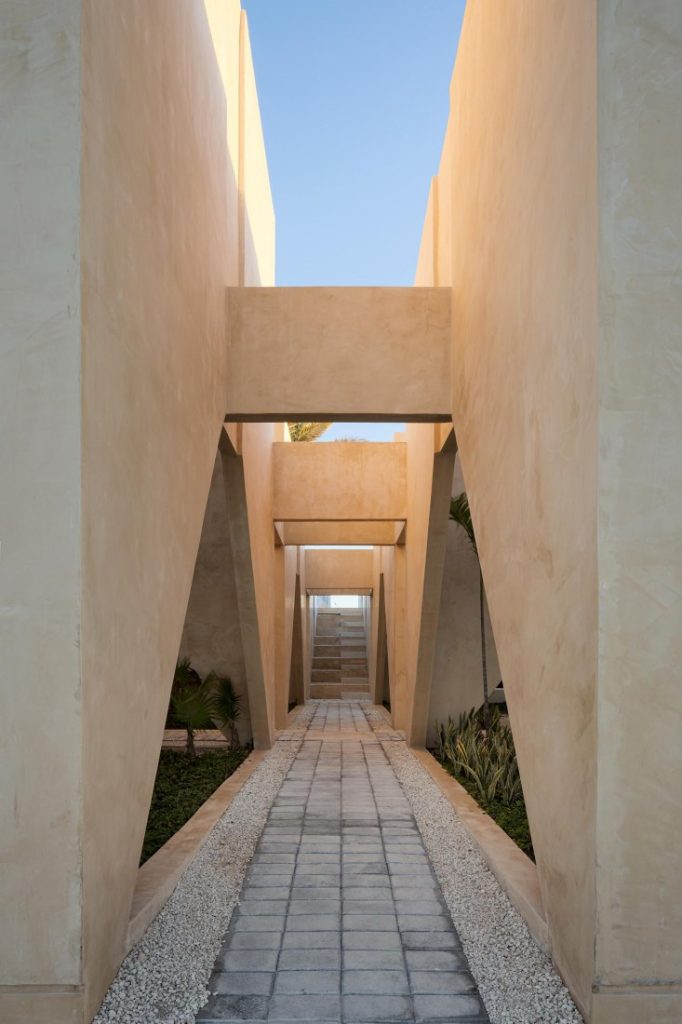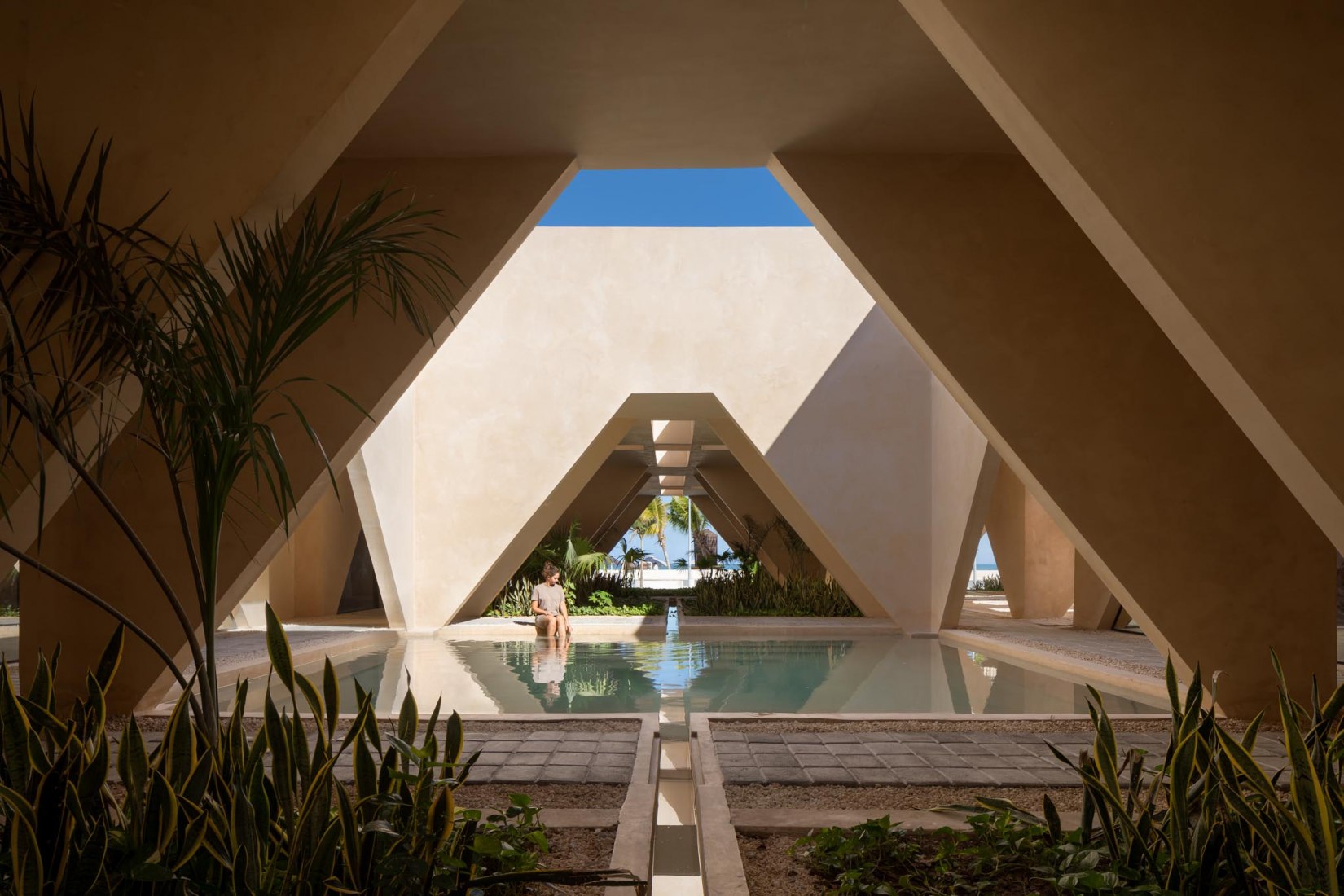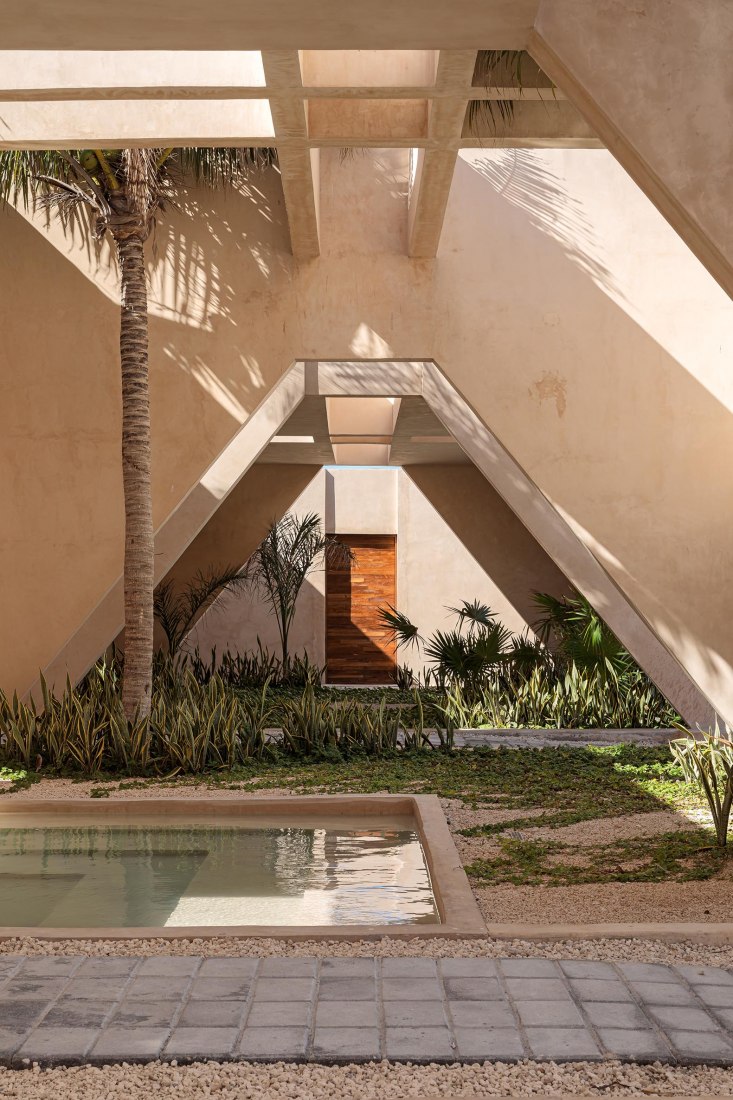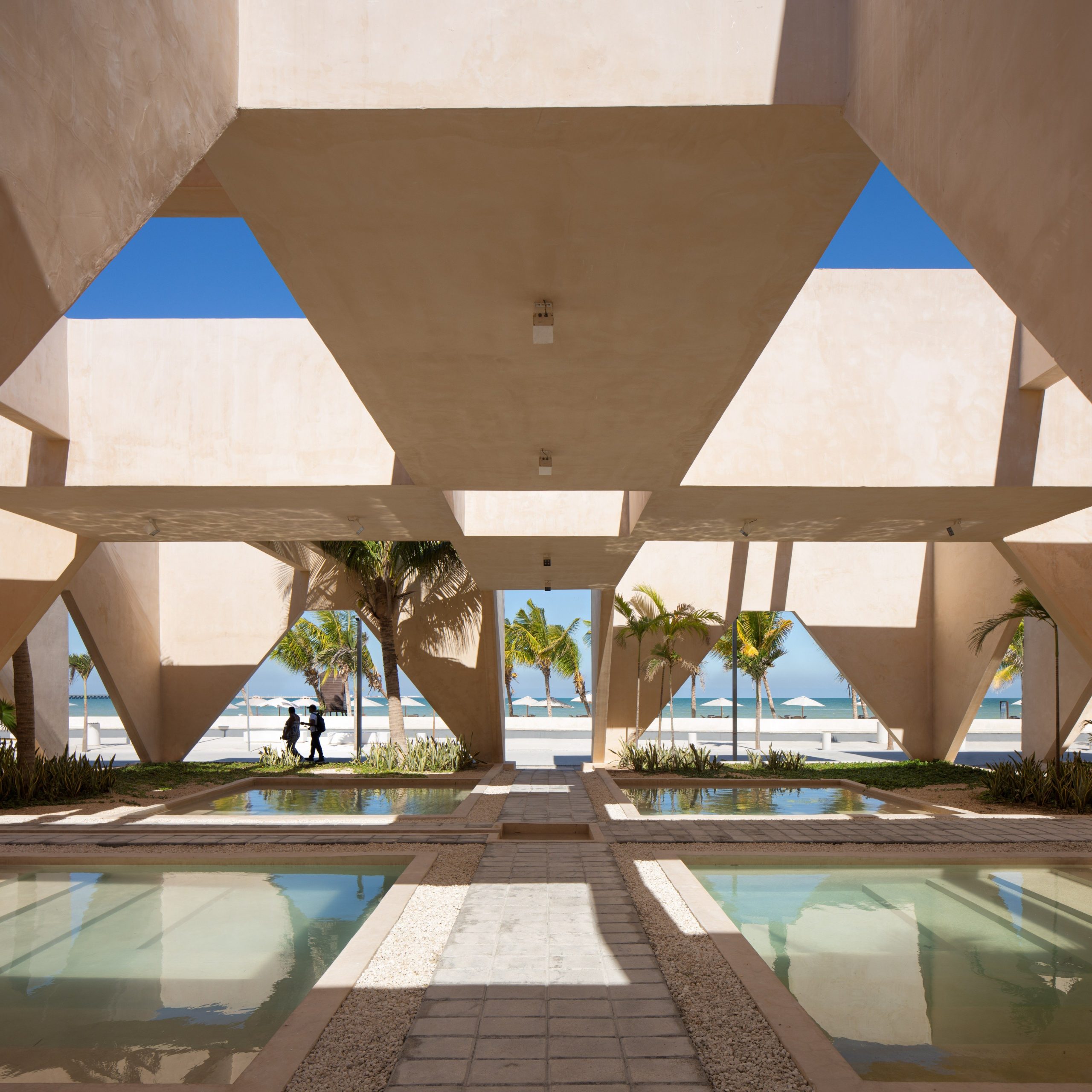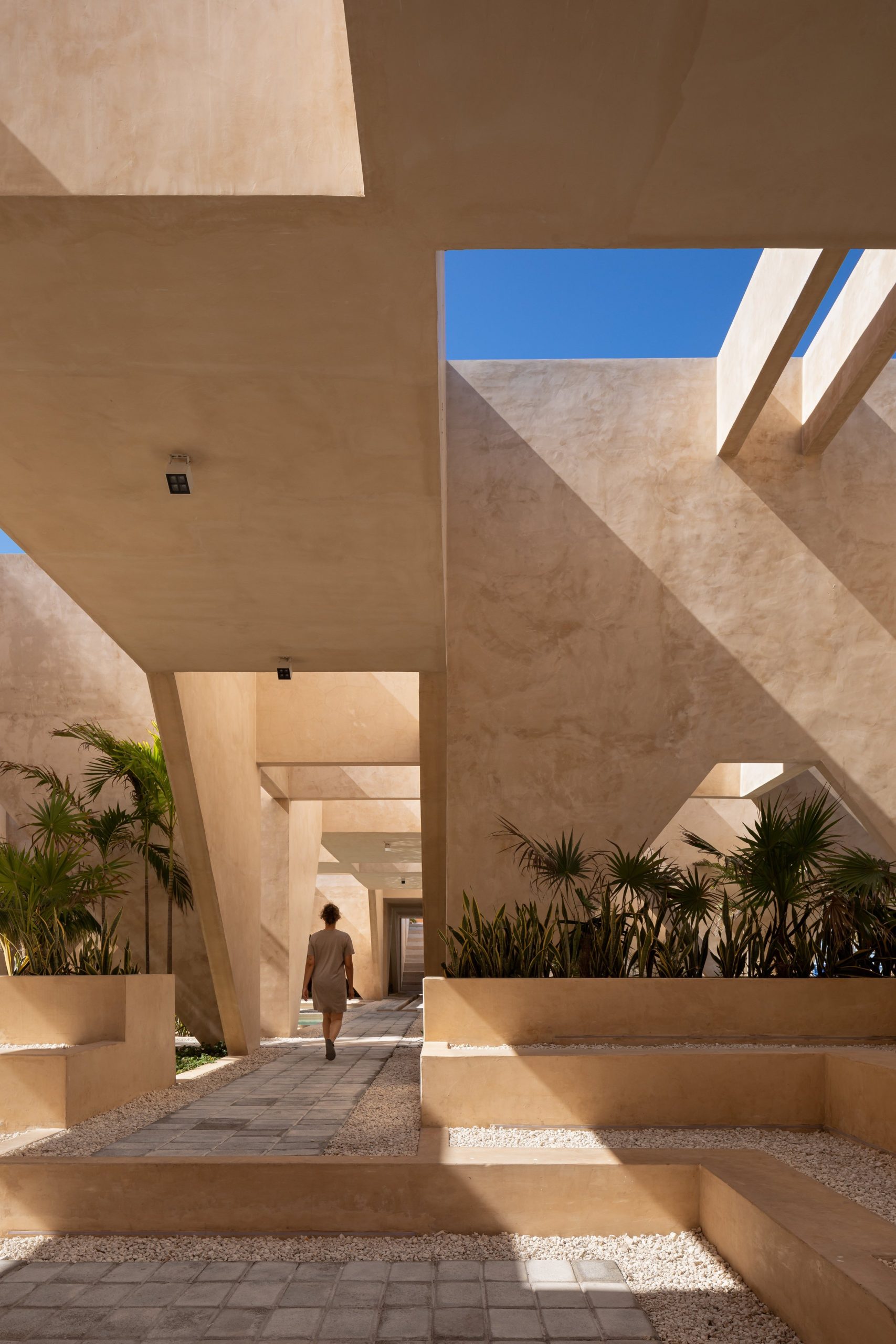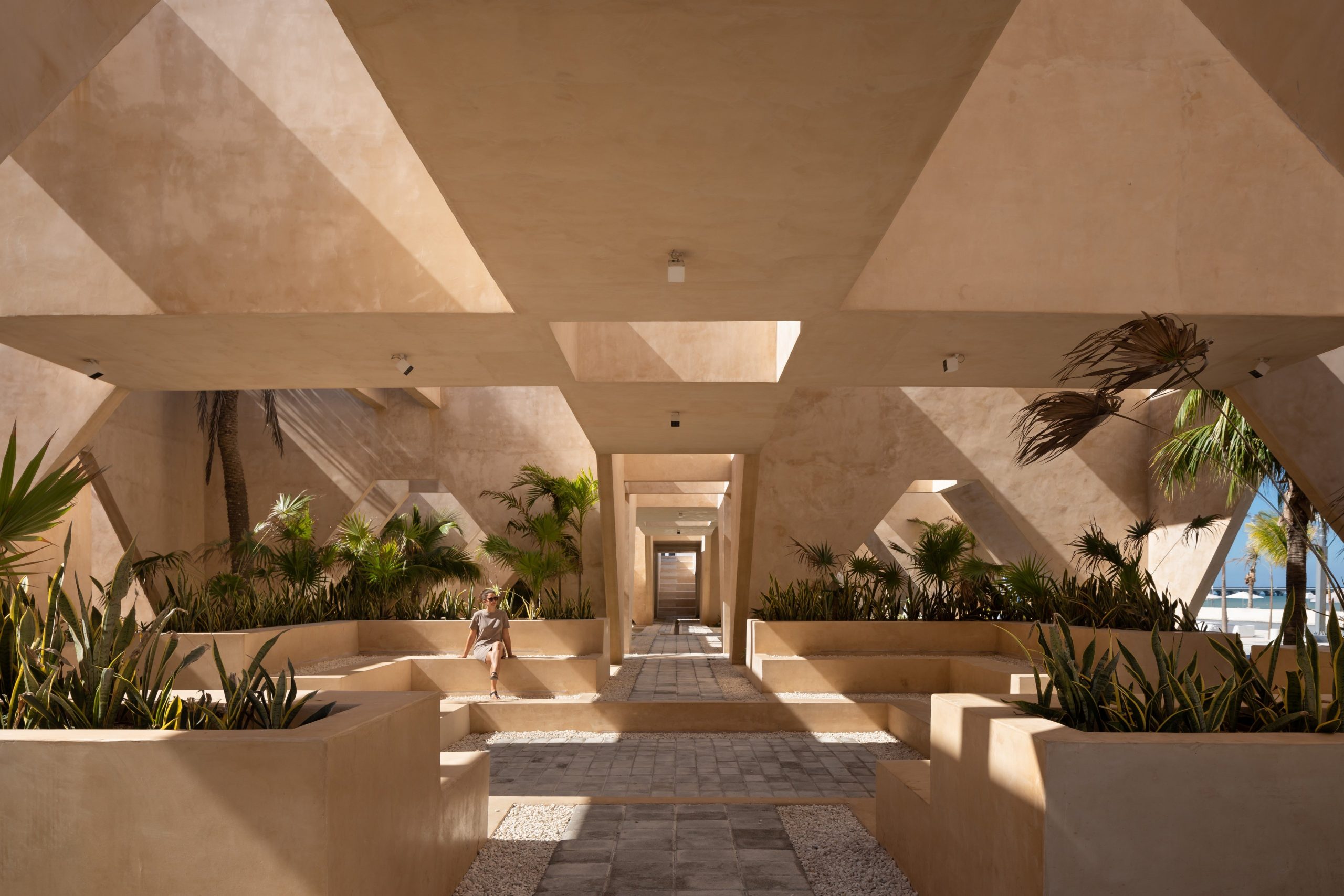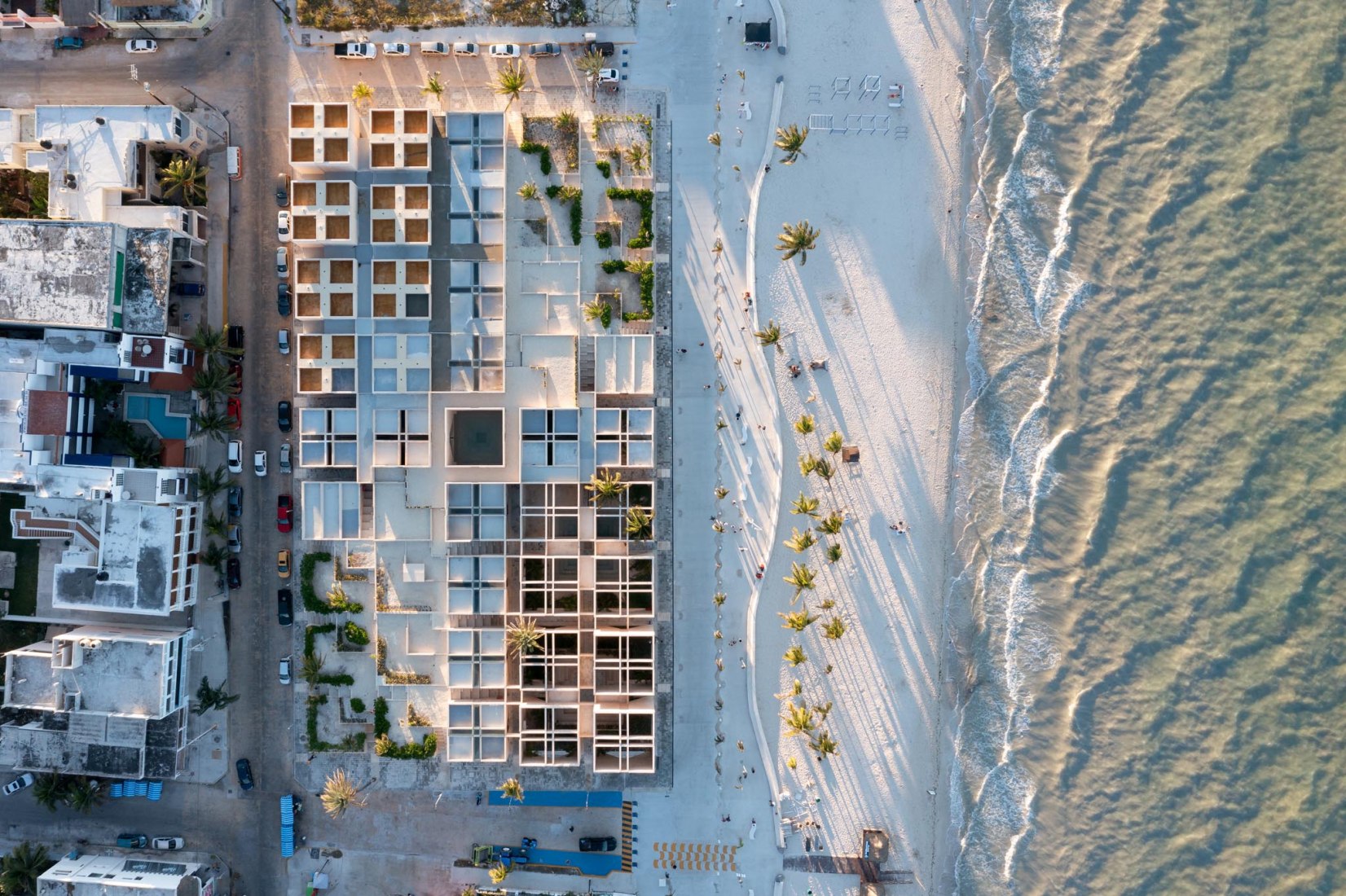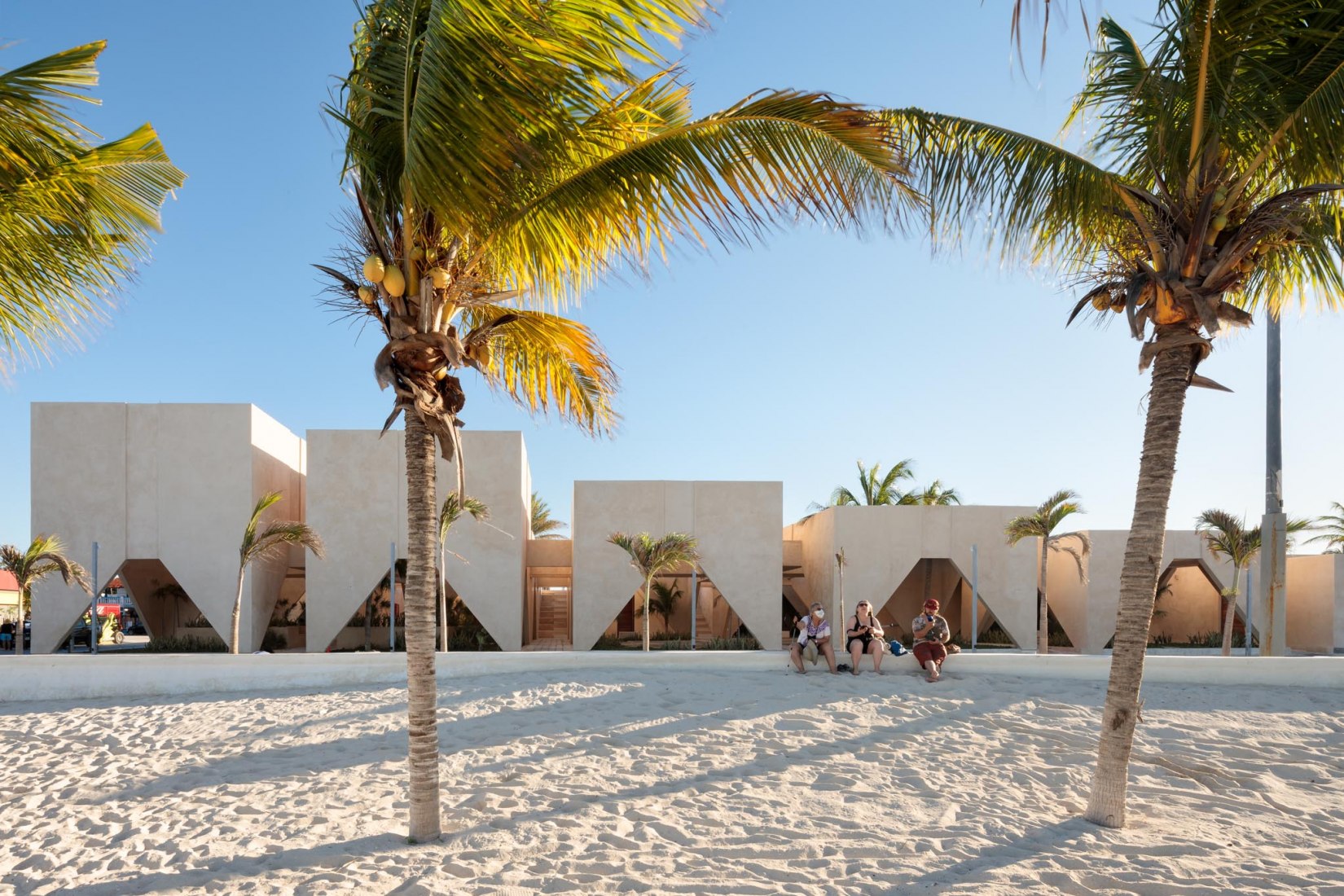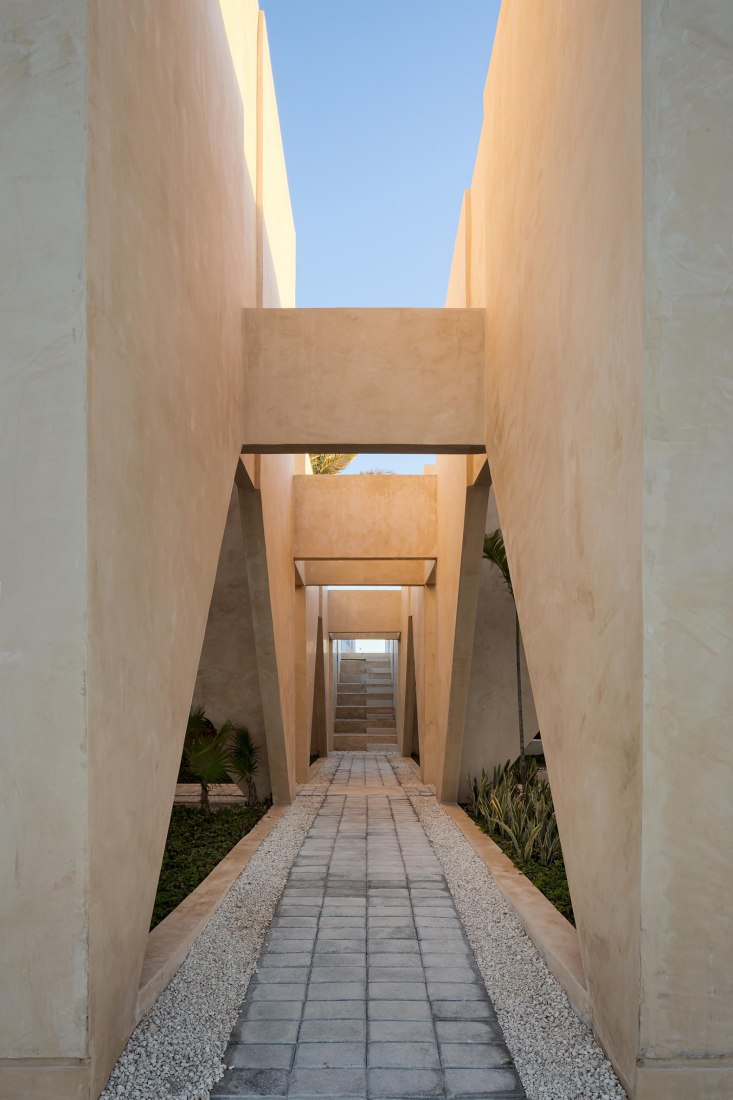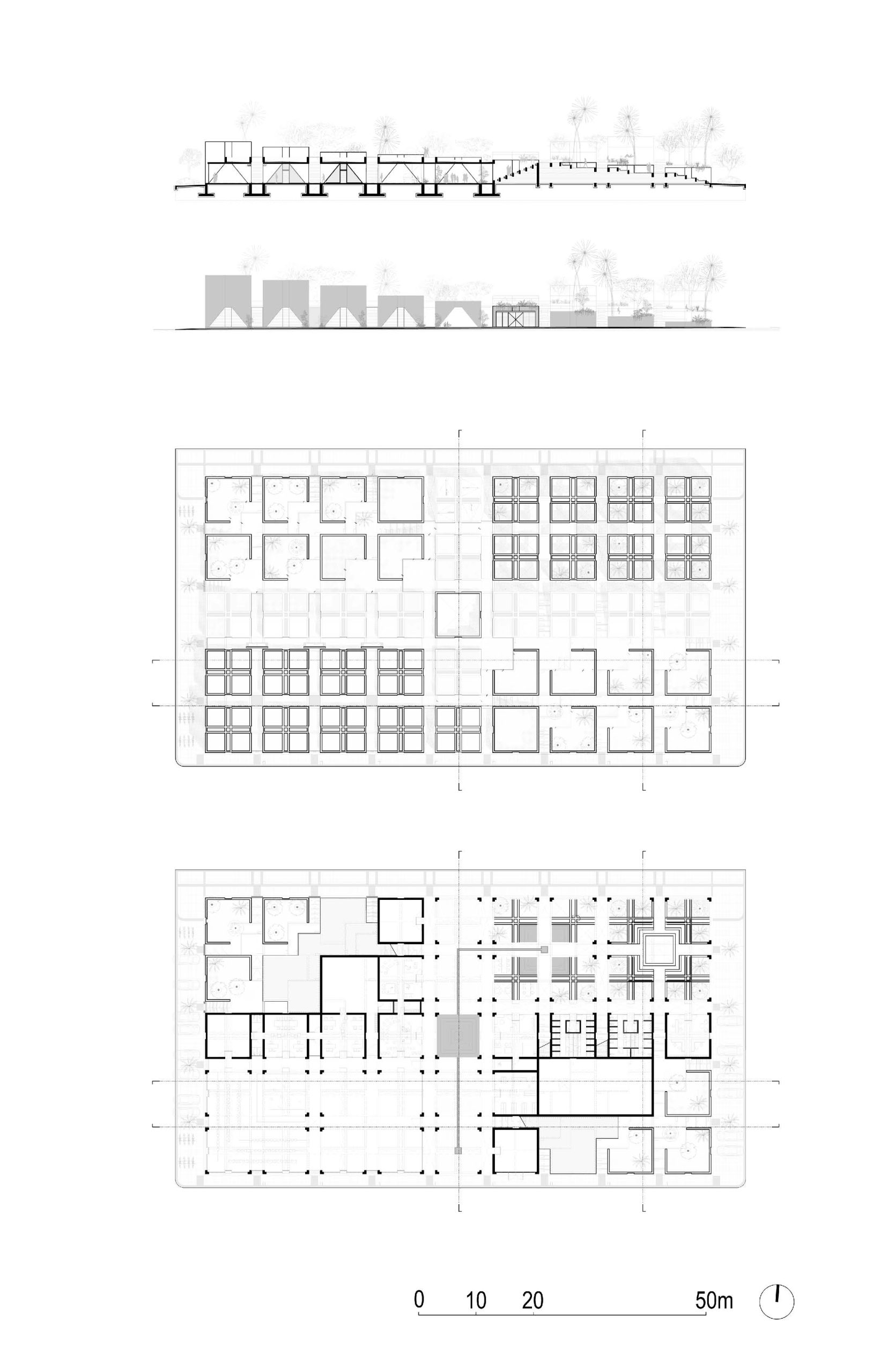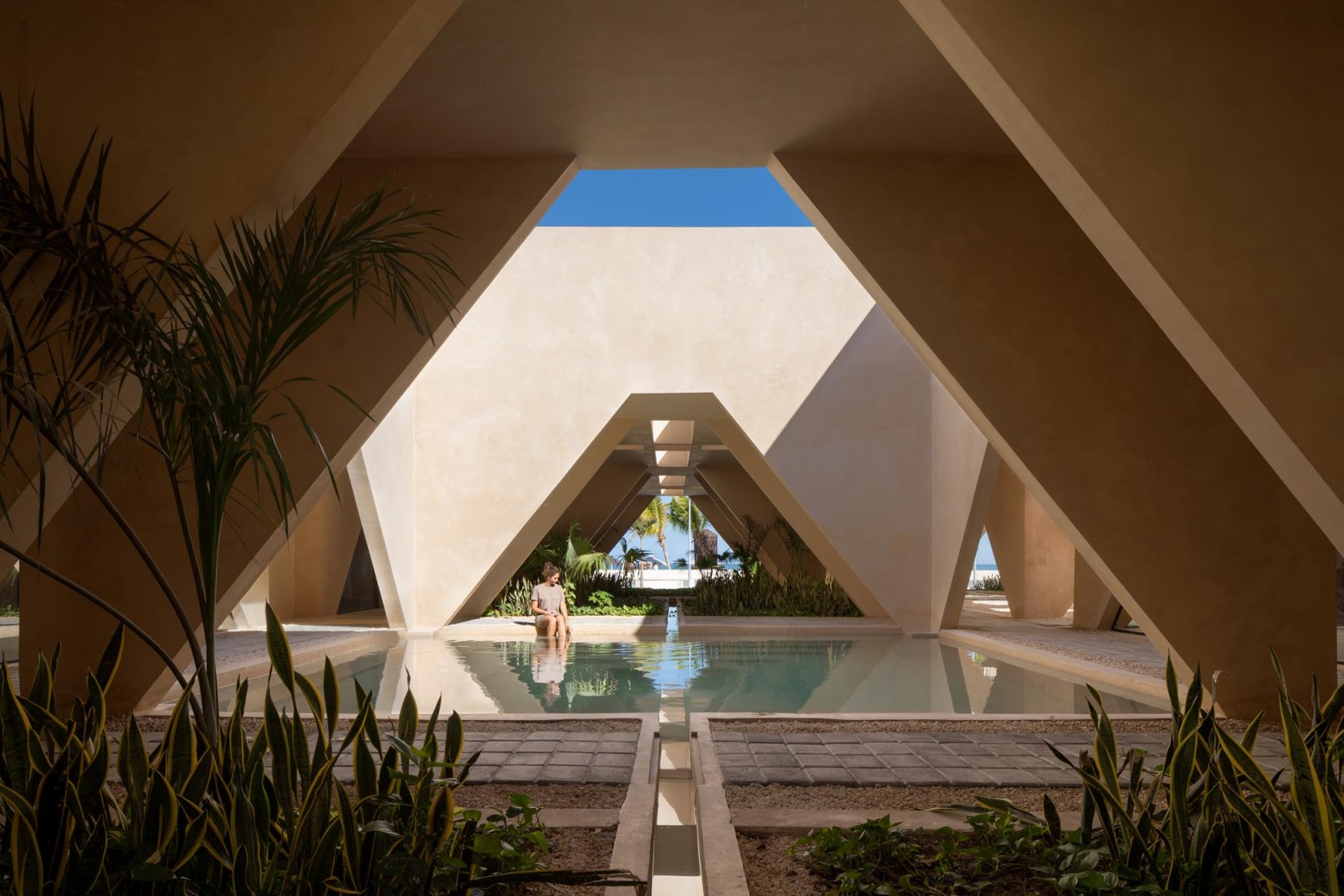
Progreso Museum of Geology / Estudio MMX
The architecture firm Estudio MMX, founded in 2010 in Mexico City by architects Jorge Arvizu, Ignacio del Río, Emmanuel Ramírez and Diego Ricalde, has recently completed the new Museum of Geology located by the beach of the port city of Progreso in the Mexican Yucatan Peninsula. The city is a gateway to the Mayan archaeological sites of Chichen Itza, Uxmal and Dzibilchaltun. The museum complex is formed by a series of blocks arranged in a grid. Their triangular openings recall the shape of the region’s Mayan pyramids. The museum has been completely covered in chukum, a natural material of Mayan origin made with the powdered bark of a small thorny tree of the same name, which improves its durability and facilitates low maintenance costs.
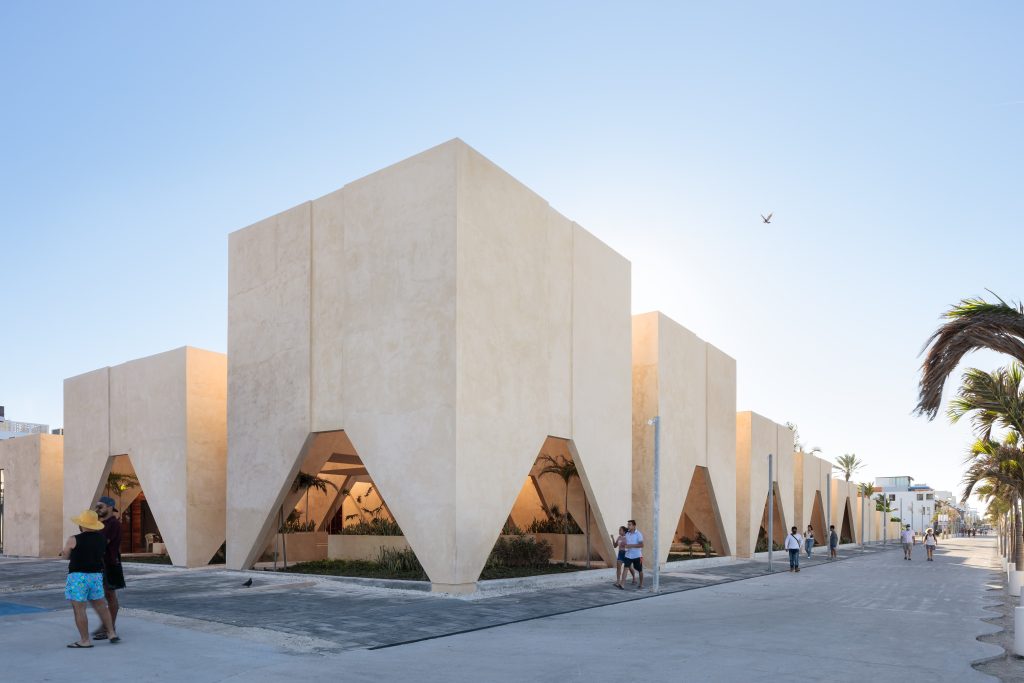
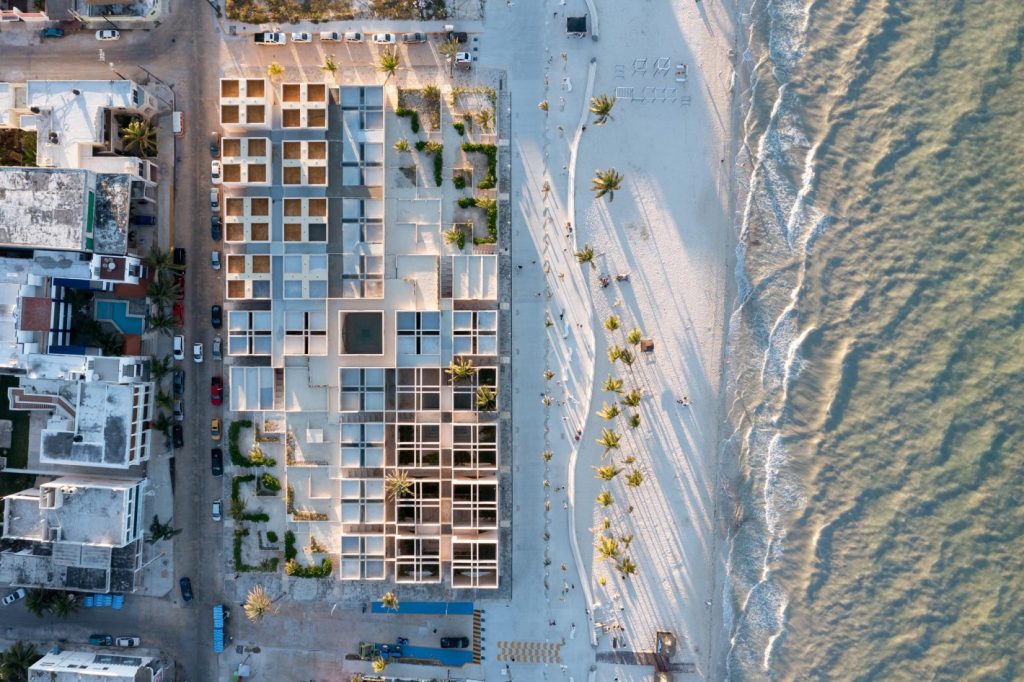
The project of the new Museum in Progreso is conceived as a cultural element and a public space, developed as a single project. The different parts of the program are consciously related to each other and to the context, through different environments in the open space. The plaza generated by the project is organized on the sides of a central corridor, through which you can both access the interior spaces and cross the plaza towards the boardwalk. Two large raised gardens flank the corners of the square, allowing you to traverse the slopes to enjoy new views at different heights. A contained square generates a landscaped route in front of the public services, which now enjoy a green and shaded area. The museum’s cafeteria and workshops are separated from it to serve the entire square, thus allowing the connection of the different activities that the project allows and linking the daily life of the building with the urban dynamics of the city.
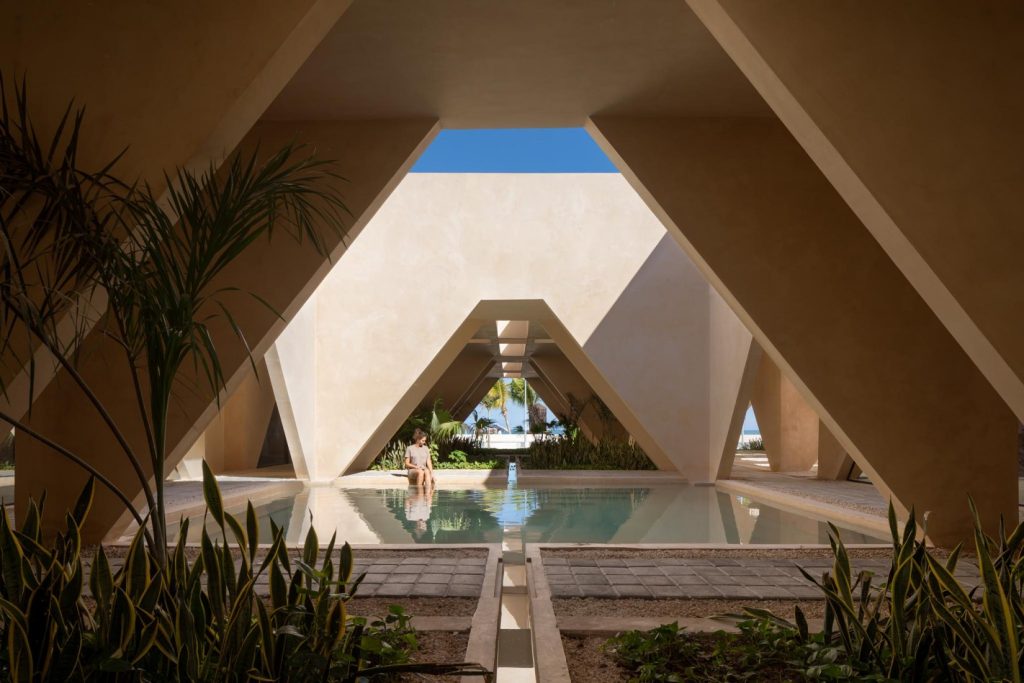
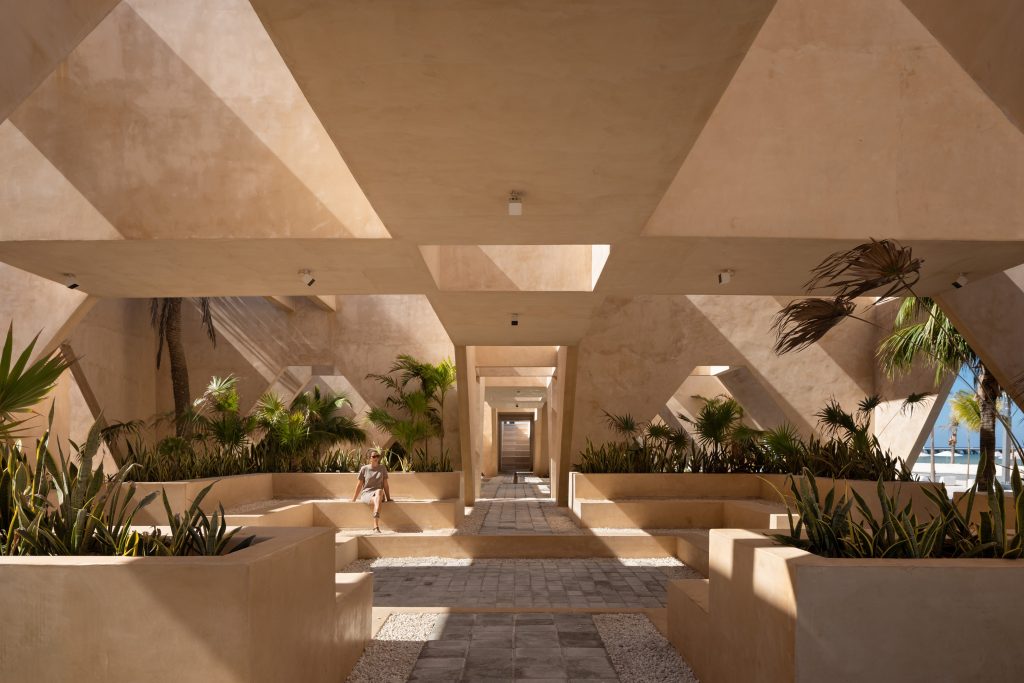
The volumes of different heights are scattered covering the square, allowing to create habitable spaces inside and a roof that can be crossed from corner to corner, with landscape elements. The materiality of the museum, covered entirely in chukum (a natural finish of Mayan origin) ensures its durability and low maintenance cost. The museum includes a series of water features inspired by Yucatán’s cenotes, the sinkholes created by the asteroid impact 66 million years ago.
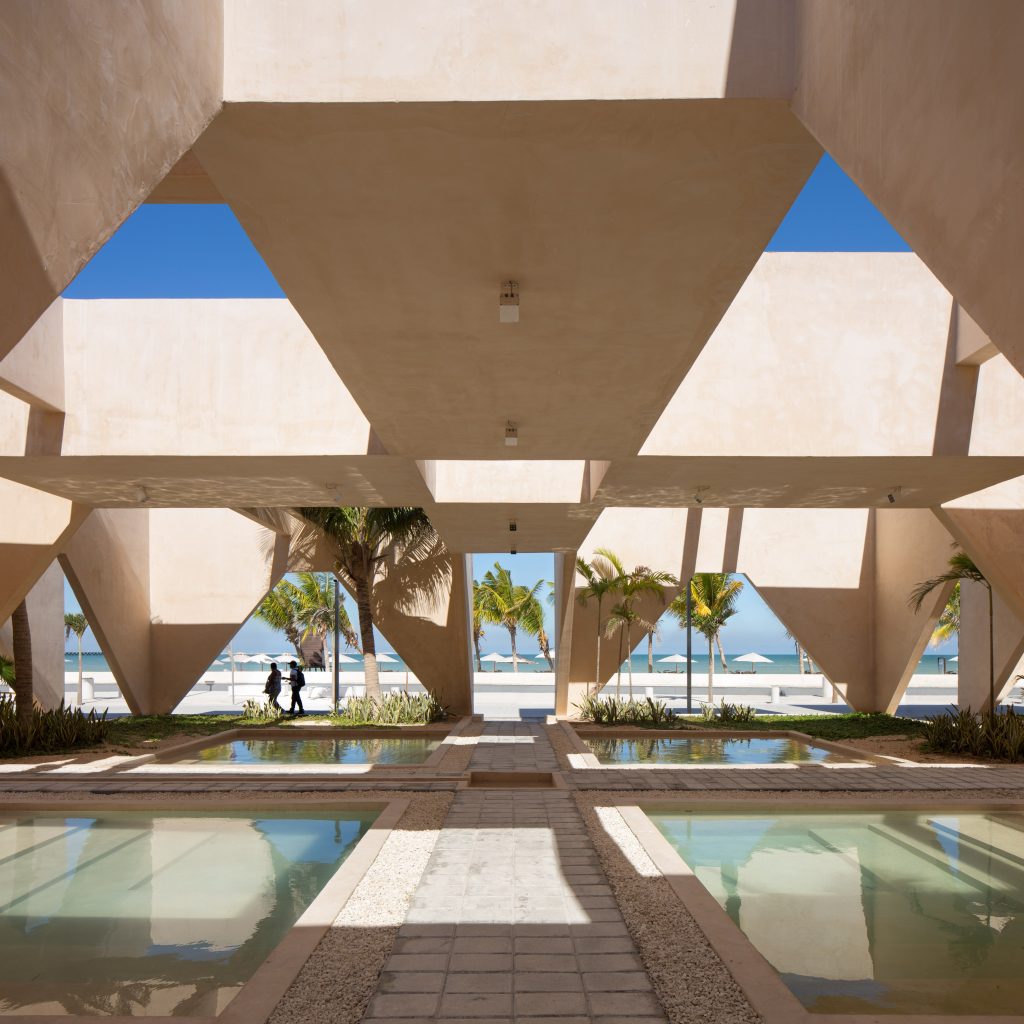
The design of the volumes and their arrangement in the public space generate paths accompanied by light, shadow and vegetation that give the square a new character rich in experiences that evoke ideas of Mayan architecture along with the colonial heritage of the urban layout. The museum consciously synthesizes local Mayan knowledge with contemporary architectural approaches, thus generating a new identifiable and appropriable public space for the people of Progreso.
- Architecture: Estudio MMX
- Project team: Diego González, Fernanda Hinojosa, Francisco Martínez, Lorena Nuñez, Armando Palacios.
- Client: Programa de Mejoramiento Urbano (PMU), Mexico.
- Area: 4,200 m².
- Location: Boulevard Turístico Malecón, Progreso, Yucatan, Mexico.
- Photography: Dane Alonso

